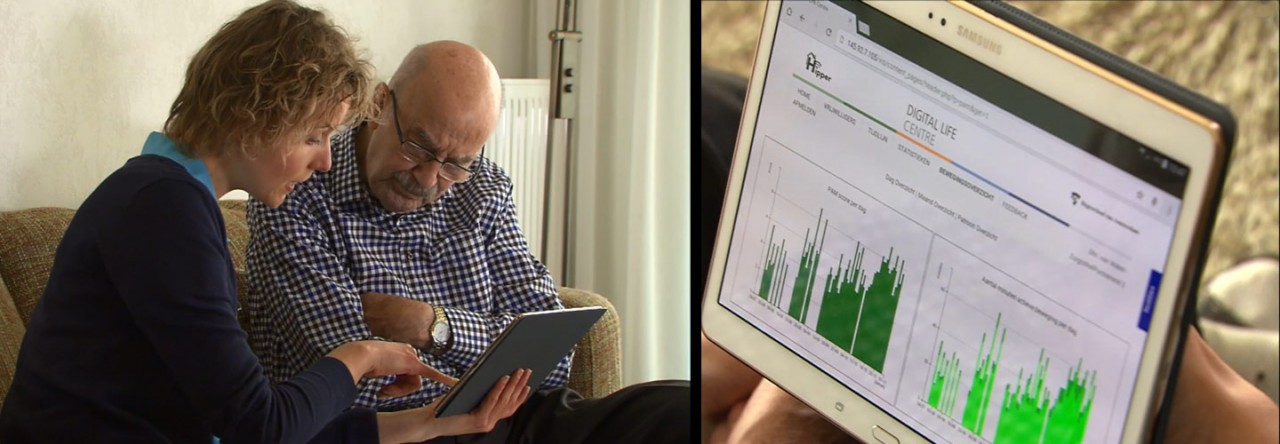Introduction
Each year in the Netherlands, approximately 15 000 elderly are admitted to a hospital after a hip fracture. Most falls occur during usual daily activities such as walking around the home. The effects of a hip fracture are serious; one year after a hip fracture 20-90% of these older individuals have new ADL disabilities which has an impact on their daily lives.
Fall anxiety, or the worry of falling, results in elderly moving less and minimizing their participation in activities such as walking, doing activities in the house, doing groceries or visiting friends or family. As a result of less movement and less engagement in daily activities, older individuals have the chance of not experiencing a full recovery after the hip fracture.
An increase in self-efficacy concerning falls can minimize fall anxiety and help the older individuals to physically participate in activities. Through an coaching intervention consisting of five steps:
- to give information and education about the importance of physical activity and daily exercise;
- to ascertain the amount of movement and physical activity during the day and give feedback;
- to define realistic goals for the performance of daily activities;
- to plan, start and practice exercises and daily activities and;
- to evaluate progress; the self-efficacy concerning falls and recovery can be improved. New technologies such as sensor monitoring can be used as a tool for coaching.
The aim of this study is to investigate the effect of sensor monitoring and coaching on the recovery of daily functioning among older individuals after hip fracture. Sensor monitoring will be used in this study as a coaching tool embedded in an occupational therapy rehabilitation program.
Fonds Nuts Ohra is financing this research.
